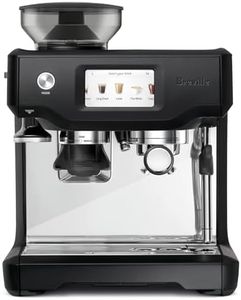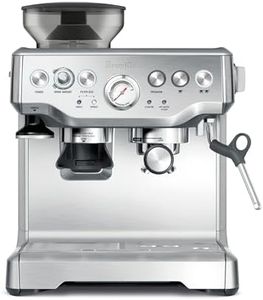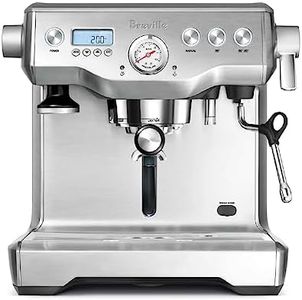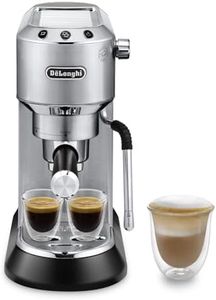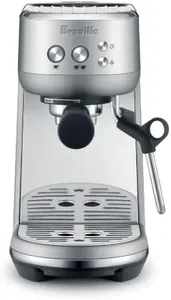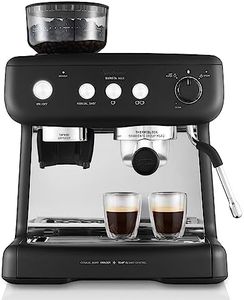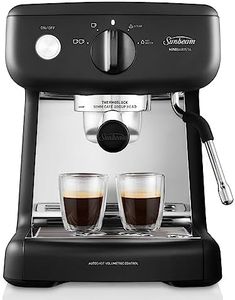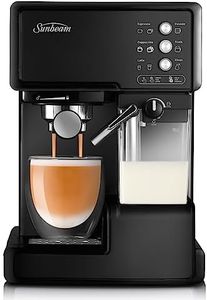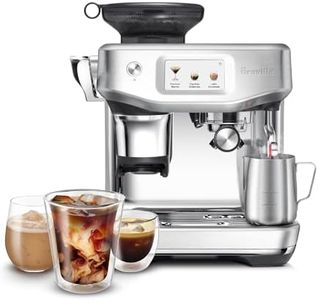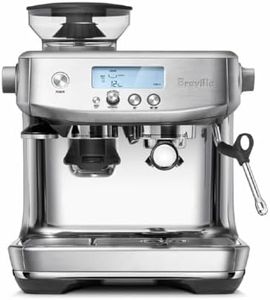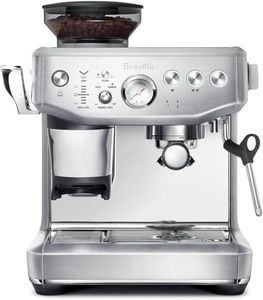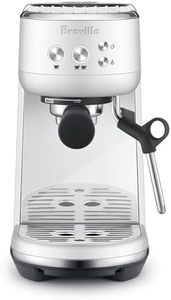We Use CookiesWe use cookies to enhance the security, performance,
functionality and for analytical and promotional activities. By continuing to browse this site you
are agreeing to our privacy policy
10 Best Manual Espresso Machines
From leading brands and best sellers available on the web.Buying Guide for the Best Manual Espresso Machines
Choosing a manual espresso machine can be an exciting and rewarding journey, especially if you enjoy being hands-on and having full control over your espresso making process. These machines allow you to experiment and perfect your coffee, but with so many options it’s important to know what features matter most and how they affect your experience. Understanding key specifications will help you select a product that matches your coffee preferences, routine, and skill level, making your preparation both satisfying and delicious.Pressure ControlPressure control refers to how much force is used to push hot water through the coffee grounds, which greatly impacts the flavor and texture of your espresso. In manual machines, pressure is often generated through levers or pistons, and being able to consistently hit the sweet spot—generally around 9 bars—is key. Some machines allow you to adjust this force, while basic models use a fixed pressure. If you want to experiment with different coffee types or fine-tune your espresso, variable pressure can be an advantage; otherwise, a consistent fixed pressure might make things easier if you’re focused on reliability.
Boiler Type and CapacityThe boiler is what heats water for brewing. Some manual machines use a single boiler, which is usually compact and heats up quickly—ideal for making one or two espressos at a time. Larger, dual-boiler or heat-exchange systems allow for simultaneous brewing and steaming, which is helpful if you enjoy milk drinks like cappuccinos. Consider how many drinks you typically make in one session and whether simultaneous steaming matters to you, as well as how long you’re willing to wait between shots.
Temperature StabilityTemperature stability describes how well a machine maintains the ideal water heat during brewing. Consistent temperature is crucial for flavor: too hot or too cold can ruin your shot. Higher-end machines often feature mechanisms to keep temperatures steady, while basic ones can fluctuate more. If you’re particular about taste and want consistent results, look for features or reviews that highlight stable temperature performance.
Build Quality and MaterialsBuild quality covers how sturdy and long-lasting a machine is, and the type of materials used. Stainless steel, brass, and high-quality plastics are common in durable models. Solid construction also means less movement and vibration during brewing, leading to more consistent espresso pulls. If you plan to use your machine frequently or value aesthetics and feel, prioritize machines made from robust, long-lasting materials.
Ease of Use and MaintenanceEase of use involves how intuitive and simple it is to operate the machine, from preparing coffee to cleaning everything up. Some manual machines require more effort—dialing in grind size, tamping, and cleaning parts. Others offer features or designs that make these steps easier. Think about your daily habits: if you enjoy the ritual and don’t mind hands-on steps, intricate designs may suit you. If you prefer quick clean-ups and smoother operation, prioritize machines designed for easy maintenance.
Portafilter SizeThe portafilter is the handle that holds your coffee grounds. Common sizes are 49mm, 51mm, and 58mm, with larger sizes found on commercial and prosumer machines. A bigger portafilter allows more coffee and greater control over extraction. If you’re aiming for café-quality espresso or want more room to experiment, a standard larger portafilter can be beneficial. For single drinkers or those with limited space, smaller portafilters can work just fine.
